#Chicago Race Riot
Text
Free Black History, Palestine, Socialism (and other) books on Haymarket
So, HaymarketBooks is a cool online bookstore that, while it does sell physical and digital books, it also offers a lot of free ebooks on subjects it thinks the public should be aware of.
Two categories I know of are Black History, after some racist law in the US that banned Black History resources
And Palestine, what with government media giving a super biased view of unfortunately
It’s in moments like these that we must turn to independent media and resource providers to educate ourselves on topics the government or other people don’t want us to learn about.
Now, here are all of Haymarket’s books they are offering for free, since their website doesn’t have a filter or sort by price option.
Here they are, 17 in total, as per 2nd Feb 2024 :)
Boycott, Divestment, Sanctions by Omar Barghouti, 320 pages
1989, The Number by Kevin Coval and Nate Marshall, 23 pages
Inauguration by Idris Goodwin and Nico Wilkinson, 23 pages
The Anti-Inauguration by Anand Gopal, Owen Jones, et al., 40 pages
Commando by E'mon Lauren,
Human Highlight by Kevin Coval and Idris Goodwin
1919 by Eve L. Ewing
The New Authoritarians by David Renton
Socialist Strategy and Electoral Politics
The Brother You Choose by Susie Day
Can't Pay, Won't Pay by Debt Collective
Black Lives Matter at School by Jesse Hagopian and Denisha Jones
Palestine: A Socialist Introduction Edited by Sumaya Awad and Brian Bean
Light in Gaza Edited by Jehad Abusalim, Jennifer Bing, et al., 280 pages
A Life of Activism by Howard Zinn, 81 pages
Our History Has Always Been Contraband Edited by Colin Kaepernick, Robin D. G. Kelley, et al.
From the River to the Sea Edited by Sai Englert, Michal Schatz, et al.
While their website is limited when it comes to pricing options, it's not limited with free books, so you don't need to enter a single financial detail to download these books :)
Note: I haven't read any of these books yet so the tags are just based on their book descriptions
Other places for more free books:
Liberation Library
On the colonization and ethnic cleansing of Palestine
Sudan guide, not an ebook, but #keep eyes on sudan #free sudan
Happy reading! :)
#haymarket books#free books#palestine#palestine resources#black history#debt collective#debt#socialism#activism#howard zinn#racism#authoritarianism#revolution#Chicago Race Riot#1919#basketball#poetry#chicago#resistance#1989#bds movement#black lives matter#book banning#history#modern history#gaza#west bank#social justice#sudan#educate yourself
25 notes
·
View notes
Text
#chicago#race riots#black tumblr#black history#black literature#black excellence#black community#civil rights#black history is american history#black history matters#black history month
549 notes
·
View notes
Text

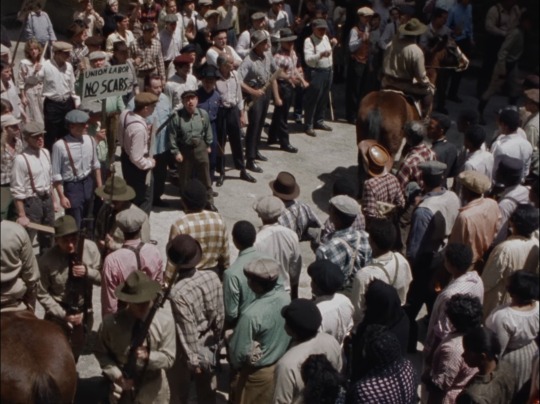

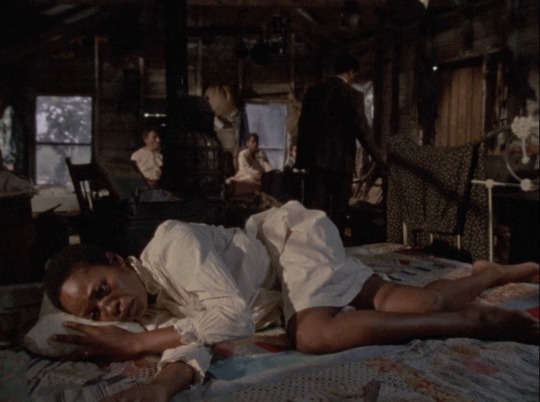
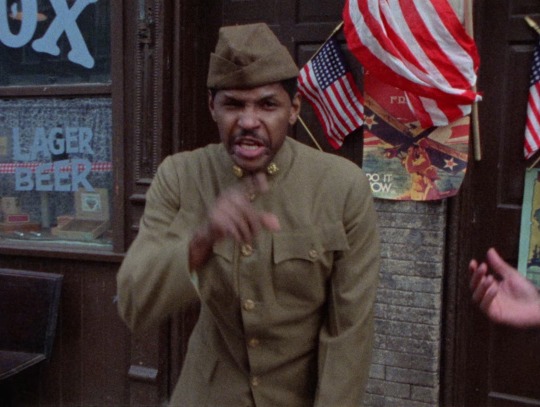
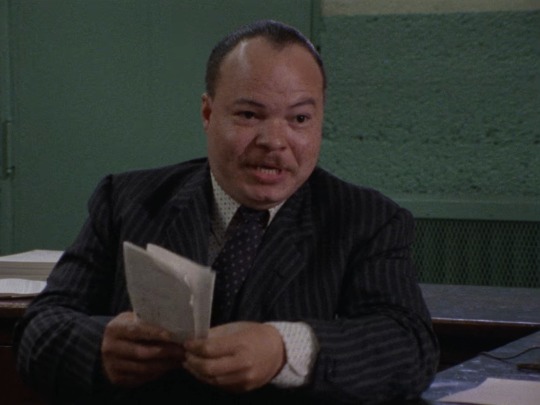


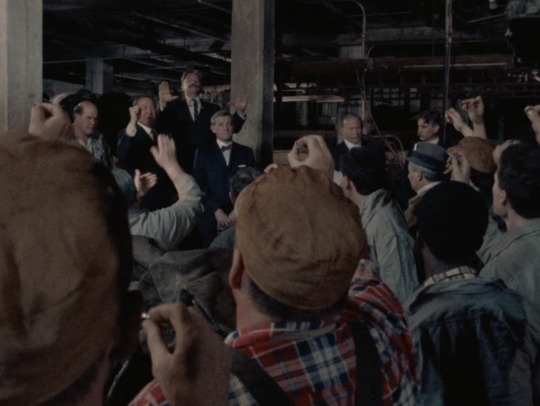
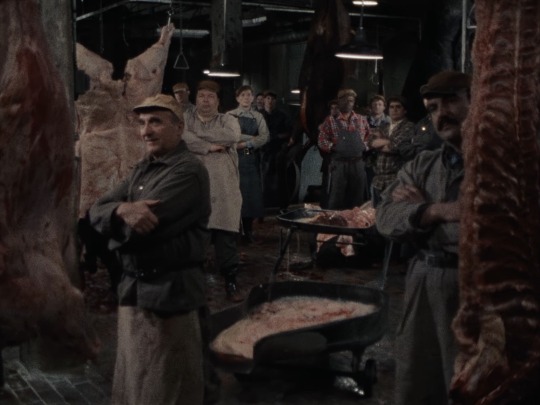





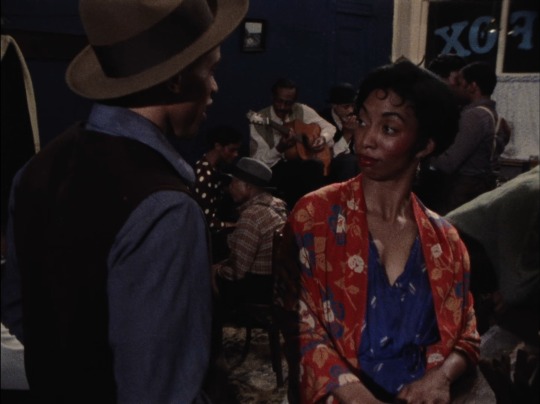
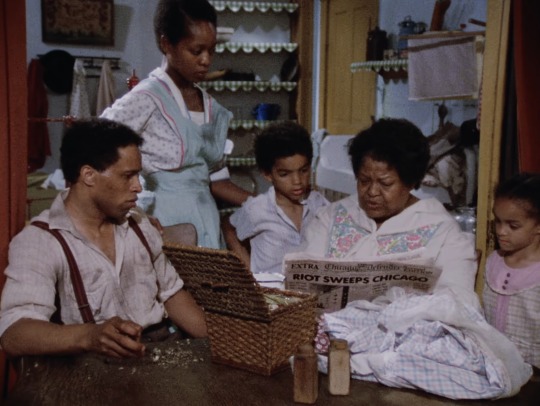

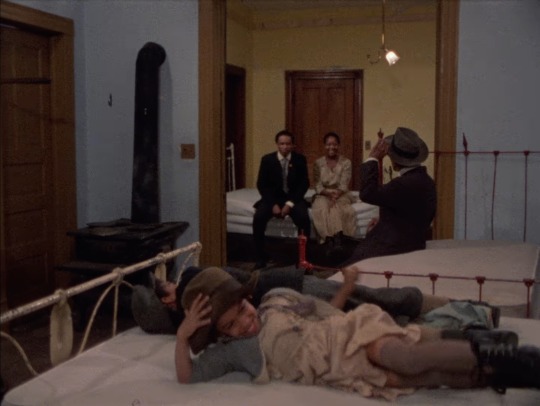


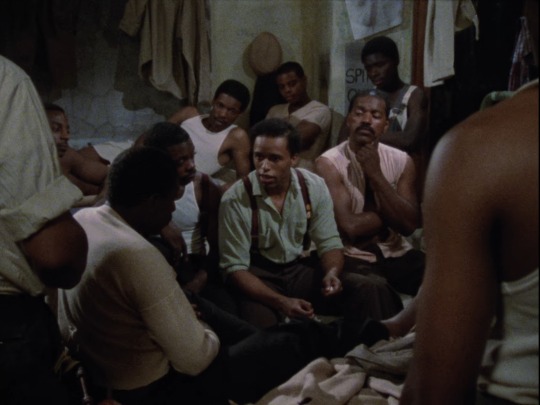
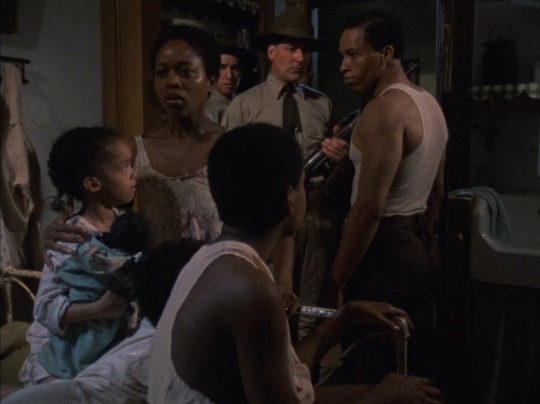
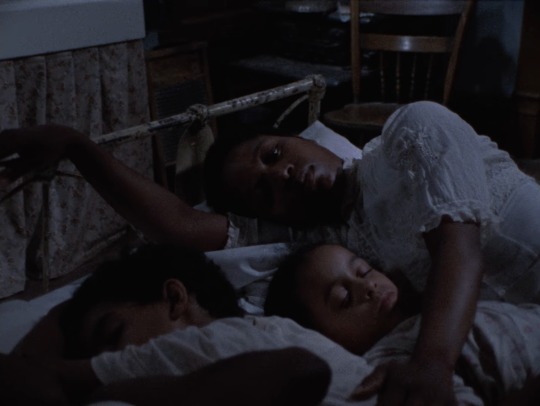

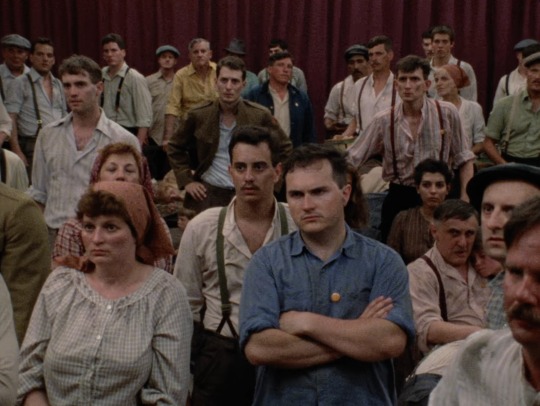
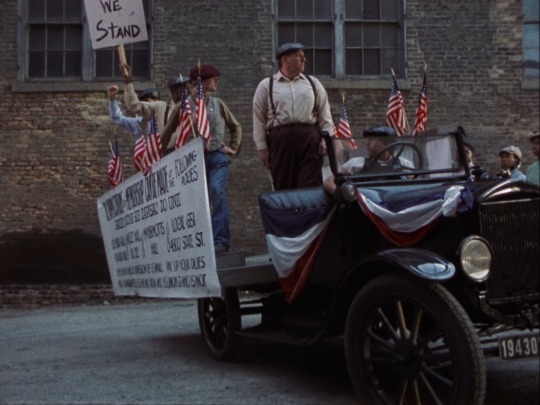
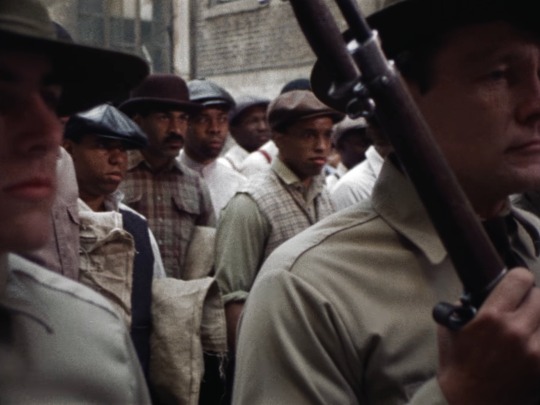
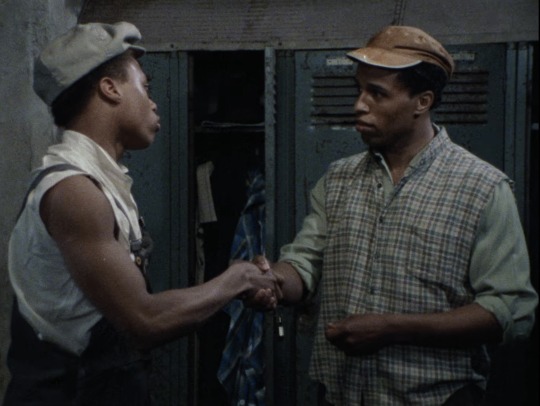
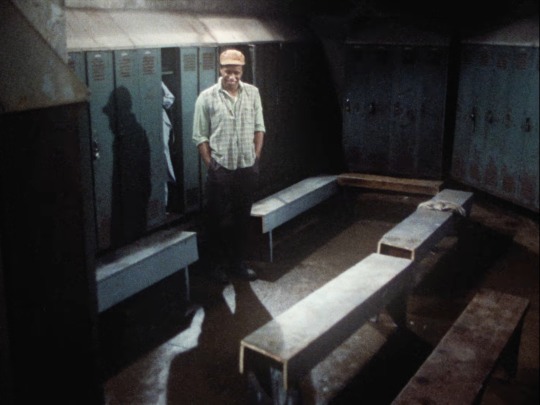
The Killing Floor (1984)
Director: Bill Duke
Cinematographer: William Birch
Starring: Damien Leake, Alfre Woodard, Dennis Farina, Ernest Rayford, Moses Gunn, Clarence Felder, Stephen McKinley Henderson, and John Mahoney.
#the killing floor#1984#bill duke#alfre woodard#international workers day#labor history#indie film#dennis farina#moses gunn#damien leake#stephen mckinley henderson#john mahoney#labor rights#labor film#leftist cinema#leftist film#independent film#indie cinema#80s film#80s indie#historical drama#chicago race riot of 1919#black directors#chicago#black filmmakers#black cinema#black films#made for tv movie#american playhouse#pbs
2 notes
·
View notes
Text
Haymarket Books will offer the following e-books for free to download: “From Black Lives Matter to Black Liberation” by Keeanga Yamahtta, which explores why the Black Lives Matter movement is necessary; “Black Lives Matter at School: An Uprising for Educational Justice,” edited by Jesse Hagopian and Denisha Jones, which details how the Black Lives Matter movement has challenged institutional racism; and “1919” by Eve L. Ewing, a collection of poems depicting the Chicago race riots of 1919.
“Black people have always figured out ways to teach our history in spaces beneath, beyond, and betwixt the machinations of people like Ron DeSantis,” Ewing said. “The only thing he ever got right in his life was understanding how insurgent our stories really are, how threatening to the status quo of a nation built on theft.”
The company is also looking to provide Florida residents with more “radical books” to distribute to young people in the state.
835 notes
·
View notes
Text
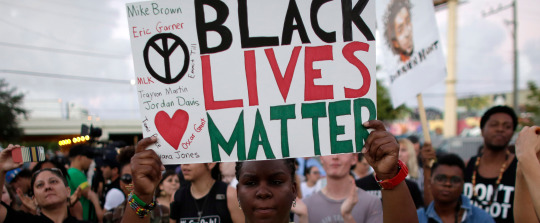
Outrage over racial profiling and the killing of African Americans by police officers and vigilantes in recent years helped give rise to the Black Lives Matter movement.
But tensions between the police and black communities are nothing new.
There are many precedents to the Ferguson, Missouri protests that ushered in the Black Lives Matter movement. Those protests erupted in 2014 after a police officer shot unarmed 18-year-old Michael Brown; the officer was subsequently not indicted.
The precedents include the Los Angeles riots that broke out after the 1992 acquittal of police officers for beating Rodney King. Those riots happened nearly three decades after the 1965 Watts riots, which began with Marquette Frye, an African American, being pulled over for suspected drunk driving and roughed up by the police for resisting arrest.
I’m a criminal justice researcher who often focuses on issues of race, class and crime. Through my research and from teaching a course on diversity in criminal justice, I have come to see how the roots of racism in American policing – first planted centuries ago – have not yet been fully purged.
Slave Patrols
There are two historical narratives about the origins of American law enforcement.
Policing in southern slave-holding states had roots in slave patrols, squadrons made up of white volunteers empowered to use vigilante tactics to enforce laws related to slavery. They located and returned enslaved people who had escaped, crushed uprisings led by enslaved people and punished enslaved workers found or believed to have violated plantation rules.
The first slave patrols arose in South Carolina in the early 1700s. As University of Georgia social work professor Michael A. Robinson has written, by the time John Adams became the second U.S. president, every state that had not yet abolished slavery had them.
Members of slave patrols could forcefully enter anyone’s home, regardless of their race or ethnicity, based on suspicions that they were sheltering people who had escaped bondage.
The more commonly known precursors to modern law enforcement were centralized municipal police departments that began to form in the early 19th century, beginning in Boston and soon cropping up in New York City, Albany, Chicago, Philadelphia and elsewhere.
The first police forces were overwhelmingly white, male and more focused on responding to disorder than crime.
As Eastern Kentucky University criminologist Gary Potter explains, officers were expected to control a “dangerous underclass” that included African Americans, immigrants and the poor. Through the early 20th century, there were few standards for hiring or training officers.
Police corruption and violence – particularly against vulnerable people – were commonplace during the early 1900s. Additionally, the few African Americans who joined police forces were often assigned to black neighborhoods and faced discrimination on the job. In my opinion, these factors – controlling disorder, lack of adequate police training, lack of nonwhite officers and slave patrol origins – are among the forerunners of modern-day police brutality against African Americans.
Jim Crow Laws
Slave patrols formally dissolved after the Civil War ended. But formerly enslaved people saw little relief from racist government policies as they promptly became subject to Black Codes.
For the next three years, these new laws specified how, when and where African Americans could work and how much they would be paid. They also restricted black voting rights, dictated how and where African Americans could travel and limited where they could live.
The ratification of the 14th Amendment in 1868 quickly made the Black Codes illegal by giving formerly enslaved blacks equal protection of laws through the Constitution. But within two decades, Jim Crow laws aimed at subjugating African Americans and denying their civil rights were enacted across southern and some northern states, replacing the Black Codes.
For about 80 years, Jim Crow laws mandated separate public spaces for blacks and whites, such as schools, libraries, water fountains and restaurants – and enforcing them was part of the police’s job. Blacks who broke laws or violated social norms often endured police brutality.
Meanwhile, the authorities didn’t punish the perpetrators when African Americans were lynched. Nor did the judicial system hold the police accountable for failing to intervene when black people were being murdered by mobs.
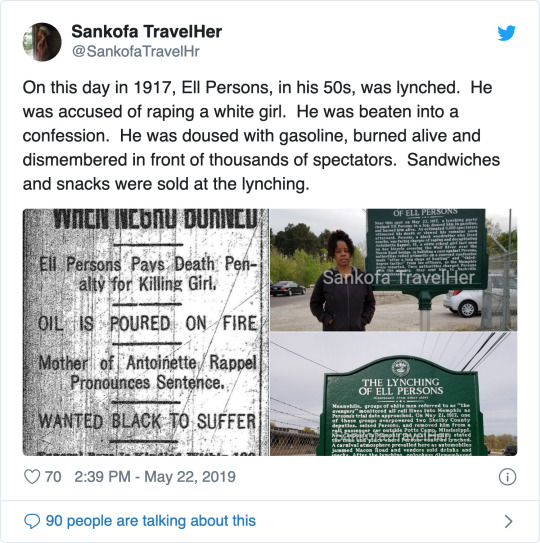
Reverberating Today
For the past five decades, the federal government has forbidden the use of racist regulations at the state and local level. Yet people of color are still more likely to be killed by the police than whites.
The Washington Post tracks the number of Americans killed by the police by race, gender and other characteristics. The newspaper’s database indicates that 229 out of 992 of those who died that way in 2018, 23% of the total, were black, even though only about 12% of the country is African American.
Policing’s institutional racism of decades and centuries ago still matters because policing culture has not changed as much as it could. For many African Americans, law enforcement represents a legacy of reinforced inequality in the justice system and resistance to advancement – even under pressure from the civil rights movement and its legacy.
In addition, the police disproportionately target black drivers.
When a Stanford University research team analyzed data collected between 2011 and 2017 from nearly 100 million traffic stops to look for evidence of systemic racial profiling, they found that black drivers were more likely to be pulled over and to have their cars searched than white drivers. They also found that the percentage of black drivers being stopped by police dropped after dark when a driver’s complexion is harder to see from outside the vehicle.
This persistent disparity in policing is disappointing because of progress in other regards.
There is greater understanding within the police that brutality, particularly lethal force, leads to public mistrust, and police forces are becoming more diverse.
What’s more, college students majoring in criminal justice who plan to become future law enforcement officers now frequently take “diversity in criminal justice” courses. This relatively new curriculum is designed to, among other things, make future police professionals more aware of their own biases and those of others. In my view, what these students learn in these classes will make them more attuned to the communities they serve once they enter the workforce.
In addition, law enforcement officers and leaders are being trained to recognize and minimize their own biases in New York City and other places where people of color are disproportionately stopped by the authorities and arrested.
But the persistence of racially biased policing means that unless American policing reckons with its racist roots, it is likely to keep repeating mistakes of the past. This will hinder police from fully protecting and serving the entire public.
#The Racist Roots of American Policing: From Slave Patrols to Traffic Stops#american policing#slave catchers#police#fuck the police#acab#racism with a badge and gun#white supremacy#systemic racism#racial profiling#racist roots#Black Codes
10 notes
·
View notes
Text
so. the thing about last night’s chapter of americana is that it was kind of just supposed to bridge to the rest of the story. i have been deliberating for MONTHS about how to attack the issue of april-june of 1968 (aka, the rioting after dr. king’s death) simply because it’s such a difficult time. sarge, a clear conservative, would probably have a lot to say about the rioting. he’s pro-civil rights as much as anyone else (legislatively— not so much on the demonstrations). but AS A CONSERVATIVE he would not even TRY to rationalize the rioting. this would piss fillmore off, because he obviously would want to be on the streets, too. he’d be angry, mourning, just like everyone else on the left. 1968 is an incredibly polarizing time, especially through the lens of rioting. if i approached it realistically (and, also with the characterization i’ve made), they’d break up again.
also, on fillmore WANTING to be on the streets: there’s no good way to represent that. civil rights and anti war were completely independent from one another by 1968. civil rights had moved toward black power, in which there is no place for white help. the sncc actually asked all of its white workers to resign and “do their own thing” in may 1967 (i think). like there was simply no place for white people in civil rights activism after it turned toward militancy. that’s the truth, and it would be a disservice to bend it. i could write a thesis about the sncc split and late sixties black power— but, otherwise, i have no idea how to apply it to fiction. it’s a difficult balance between race politics, electoral politics, and plain old dichotomy.
so, i skipped two months, and moved right along to election politics. is it doing a disservice to history? yes. but it’s the only clear way to get them to stay together— whatever that means.
anyway. that’s my defense. i wrote my thesis on the 1968 democratic convention riots, so im sure you can expect a few (maybe 3? not sure) mostly-accurate chapters on the leadup & happenings of the convention. many thought that chicago was the final showdown— a “ragnarok,” according to historian todd gitlin. i’m going to throw my weight into that.
xoxo
9 notes
·
View notes
Text
Steven James Hyde (born November 28, 1959), the Familial Lore.
WB's family hails from Detroit. His paternal grandmother Ruby was born and raised in Detroit, but his paternal grandfather William "Willie" abruptly moved to Detroit at thirteen after his family lost everything in the Tulsa race riots.
WB is the eldest of two children. He grew up close to his brother Henry. They never had much, but they made it work. His dad typically worked for GM, but he and Ruby ran a little music shop and jazz club on the side.
By the late 50s, WB had just lost his first wife Marion in a car crash, and had a young daughter to raise on his own (Angie). He was around during the founding of Motown Records, and had to live in Chicago for a bit to promote the new record label, with his best friends Francis "French" Owens and Jerome Clark. There he met Edna, and they had a relationship for a bit, but Edna's brother Tag was a massive racist. So they broke it off, but not before conceiving Hyde.
Edna had also met Bud for the first time at around the same time, but didn't become romantic with him until a bit later, after WB left the picture. She masqueraded Hyde as Bud's (Bud knows, too) to placate her racist brother, and they moved to Point Place, where Bud was born and raised (on a literal pig farm).
*****
His mom's family is peppered with tragedy. Edna O'Brien was born to teenage parents in northern Appalachia/southwestern Pennsylvania, and she was initially raised with love and care by her paternal grandparents, until her parents decided to take her back when she was four. By then, they had two more children, Terry "Tag" and Clifford "Cliff."*
They were never in the same place for long. Her dad Edwin took a bunch of menial jobs and was also a truck driver, and they often lived in rundown motels. Edwin consistently physically, verbally, and sexually abused his wife Daisy, and started to do the same to Edna when she was nine. A firmly closeted bisexual, he also sexually abused both Tag and Cliff.
When Edna was sixteen, it was clear that Edwin was beginning to groom their youngest sister Marlene, but Daisy refused to leave. So the kids split, with Marlene in tow, and tried to make things work. They lived in Chicago for a few years, and Edna dabbled in sex work, waitressing, bartending, and the drug trade to make ends meet. She also discovered a love for water skiing, and she spent summers in the Dells, which was dashed when she found out she was pregnant with Hyde. She was only partially relieved when Hyde was born, since he was white (so the masquerade described above worked), but he also emerged with her father's ice-blue eyes. The same eyes she despised.
*Cliff is the only good uncle in Hyde's life. He doesn't have much, but he tries to help out Hyde when he can.
#that 70s show#that 90s show#steven hyde#edna hyde#wb barnett#my essays#finally#jerome clark is ben and russ's dad#russ is angie's husband#follow the familial lore tag for more stuffies#the familial lore
11 notes
·
View notes
Text
CHRONOLOGY OF AMERICAN RACE RIOTS AND RACIAL VIOLENCE p.3
1911
National Urban League founded.
1914
Marcus Garvey establishes the Universal Negro Improvement Association (UNIA).
November William Monroe Trotter confronts Woodrow Wilson in the White House over the president’s support for segregation in federal offices.
1915
Debut of the D.W. Griffith film, The Birth of a Nation.
Failure of African American lawsuit against the U.S. Treasury Department for compensation for labor rendered under slavery.
CHRONOLOGY OF AMERICAN RACE RIOTS AND RACIAL VIOLENCE lvii
November William J. Simmons refounds the Ku Klux Klan at Stone Mountain in Georgia.
1916
Madison Grant publishes The Passing of the Great Race, detailing his drastic prescription—including eugenics—to save the white race from being overwhelmed by ‘‘darker races.’’
May Jesse Washington, a seventeen-year-old illiterate black farm hand, is lynched in Waco, Texas.
1917
May–July East St. Louis, Illinois, riots.
August Houston, Texas, mutiny of black soldiers at Camp Logan.
1918
After protesting the lynching of her husband, Mary Turner, then eight months pregnant, is herself brutally lynched in Valdosta, Georgia.
April Congressman Leonidas C. Dyer of Missouri introduces an anti-lynching bill into Congress (the Dyer Anti-Lynching Bill is defeated in 1922).
July Chester and Philadelphia, Pennsylvania, riots.
1919
NAACP publishes Thirty Years of Lynching in the United States: 1889–1918 by Martha Gruening and Helen Boardman.
May Charleston, South Carolina, riot.
Summer Known as ‘‘Red Summer’’ because of the great number of people killed in various race riots around the country.
July Longview, Texas, riot.
Publication of Claude McKay’s sonnet, ‘‘If We Must Die.’’
Chicago, Illinois, riot.
Washington, D.C., riot.
August Knoxville, Tennessee, riot.
September Omaha, Nebraska, riot.
September–
October
Elaine, Arkansas, riot.
1920
Founding of the Commission on Interracial Cooperation, a major interracial reform organization in the South.
1921
April Tulsa, Oklahoma, riot.
1922
Anti-Lynching Crusaders are formed to educate Americans about lynching and work for its elimination.
Chicago Commission on Race Relations issues its influential report on the 1919
Chicago riots.
lviii CHRONOLOGY OF AMERICAN RACE RIOTS AND RACIAL VIOLENCE
1923
January Rosewood, Florida, riot.
February U.S. Supreme Court decision in Moore v. Dempsey leads to eventual release of
twelve African Americans in Arkansas who were convicted in perfunctory mobdominated trials of killing five whites during the Elaine, Arkansas, riots of 1919.
1929
Publication of Walter White’s Rope and Faggot: A Biography of Judge Lynch.
1930
Nation of Islam (Black Muslims) is founded in Detroit, Michigan, by W.D. Fard.
Formation of the Association of Southern Women for the Prevention of Lynching, the first organization of white women opposed to lynching.
October Sainte Genevieve, Missouri, riot.
1931
Scottsboro Case occurs in Alabama; the case comprises a series of trials arising outof allegations that nine African American youths raped two white girls in Scottsboro,
Alabama.
1932
Supreme Court renders a decision in Powell v. Alabama, a case related to the Scottsboro, Alabama, incident of 1931.
1934
Elijah Muhammad assumes leadership of the Nation of Islam.
1935
March Harlem, New York, riot.
1936
First Lady Eleanor Roosevelt addresses the annual conventions of both the NAACP and National Urban League.
1939
Billie Holiday’s first performance of the anti-lynching song Strange Fruit occurs at Cafe´ Society, New York’s only integrated nightclub.
1941
Supreme Court decision in Mitchell v. United States spurs integration of first-class railway carriages.
1942
Congress of Racial Equality (CORE) is founded as the Committee of Racial Equality.
February Double V Campaign is launched to popularize the idea that blacks should fight for
freedom abroad to win freedom at home.
1943
May Mobile, Alabama, riot.
June Beaumont, Texas, riot.
June ‘‘Zoot Suit’’ riots in Los Angeles, California.
July Detroit, Michigan, riot.
August New York City (Harlem) riot.
1944
Publication of Karl Gunnar Myrdal’s An American Dilemma: The Negro Problem and Modern Democracy.
16 notes
·
View notes
Photo

July 27, 1919 State militia faces off against a veteran during the Chicago race riot. From Vintage America Uncovered, FB.
94 notes
·
View notes
Text
And Now for the next batch of madness:
The Tour Of Fuck It We Ball part 2: Electric Boogaloo Days 4-6 of US Tourdust: The Cynthia Woods Mitchell Pavilion (The Woodlands, Texas), Dos Equis Pavillion (Dallas, Texas), Talking Stick Resort Amphitheatre (Phoenix, Arizona)
People west of the Atlantic woke up on day 4 to a fall out boy tweet and an instagram story with 1 picture of Pete followed by CAPTAIN PLANET followed by ARAB SPRING, then LA RIOTS, RODNEY KING was added and then DEEP FAKES, all in the same typography. There'd already been rumors of people hearing a cover of we didn't start the fire playing through the PA system and a day before this, a still from the animated character from HMLAG labeled we didn't start the fire was posted on discord. Here's a great summary of it by kat-scribles. Hours later they confirmed the cover covering newsworthy things from 1989-2023 which released on day 5 (external link, RIP if something happens to the falloutboy youtube account).
In true 'Fall Out Boy Releases A New Thing' fashion it's been criticized by news and people who didn't like it and so on and so forth. Nature is healing, people are actively hating on Fall Out Boy. This is truly the tour of healing.
As far as setlists go: We got an update to the first setlist picture, it reads "sophomore, gin, coffee, suitehearts and patron". Notably GINASFS is missing, despite this setlist being from the Chicago show and it is not in the order they played these songs. As of the posting of this update, all songs have been played (on dates 3, 2, 7, 8 and 10 respectively)
Speaking of setlists:
we got one for The Woodlands, 8 Ball song was Kintsugi Kid ("How will you torture us this evening/should we sing a song from 10 years ago?/Should we sing a song about 10 years ago?" codename Tango Yeti, in keeping with the more or less NATO alphabet for Ten Years) also worth noting that this is Joe's favourite track in sm(f)s. This is how we learnt that post hiatus AND in particular current album tracks were on the list of 8 Ball possibilities, marking the first in a long series of "I didn't know the 8 ball could do that"
For Dallas we got an interesting situation with the setlist. We got one, that said and fit with Kansas' set, except that one hadn't been leaked, so a lot of speculation surrounded the magic 8 ball code OCHO, which isn't NATO alphabet. This marks the day we got confirmation that they were upping their game to keep the 8 ball songs a surprise, they posted fake/old setlists at the venue and the codename ocho stands, in all likelyhood for Sophomore Slump being the eight track in FUTCT. Here's the Kansas setlist in question.
After the show we got the real Dallas setlist, song was The (After) Life Of The Party ("Should we play one about hanging out being the afterlife of the party?", codename: Sierra Alpha for Stitch/Scar Away)
For day 6 we didn't get a setlist but the 8 ball song was Homesick At Space Camp ("Should we play a brand new fucking song?/Should we play a really fucking old song?", also of note Patrick tells the audience there's an audience participation moment incoming and teaches the lyrics since it's been so long since they played it last)
As a sidenote, with these setlists we've been able to see the names of the scenes: "AQUA Scene" for the one with the starfishes and the seashell submarine that's present for uma and 16c, "Attic Scene" for the tttyg smaller stage scene, "Dog(Bubbles) Scene" for well the giant dog head with the childlike squiggles backdrop and the bubbles and transparent balls that goes on through arms race (yes i know a lot of people are keenly aware that the dog scene includes arms race), disloyal order and heaven iowa, "Red Drape" for whatever hits after heaven iowa, "TREE Scene" for the one with you guessed it the big fuck off tree that is real and you can touch scene that lasts for fake out and the entire piano + magic section, and "Red Drape" again for grudge and The Magic 8 Ball Slot. Worth mentioning here is that they started playing their shows in Joe's attic
Piano Enrichment time these dates was, SOMETHING:
Pre-Piano banter has been great, arguing over banter between them. Day 4 gave us the banter of all time, with them arguing over body fluid composition.
Piano Boy is still out for blood. On day 4 he did a triple medley of somebody to love and take on me before moving onto don't stop believin. And then he said he had imposter syndrome and did What a Catch Donnie on day 5, which at the time was a very devastating thing.
It got immediately overshadowed day 6 because he did Spotlight, off of Truant FUCKING Wave and Soul FUCKING Punk. That was a lot of lights.
These dates are when we confirmed the fixed setlist also isn't fixed at all, Hum Hallelujah was back for day 6, without sacrificing Take Over this time
Oh yea and someone referenced "Thanks Pete!" in the crowd and Pete said "Heard it", you can hear the response (not the thanks pete) just before the banter that led to Spotlight (these are so backlogged that I can confidently spoil you this WILL be important later ;) )
We hadn't even recovered from the category 11 Soul Punk event when they hit us with the grimace shake video. It may now be part of the cinematic universe of "All the times Fall Out Boy has died, specially Pete, Extra Specially By Patrick's Hand. Guys how does this keep happening."
In the outfits category that's still a thinly veiled excuse to share pics of them being silly and 'FOB stands for Family Of Bestfriends':
No wardrobe updates for day 4 other than them ocasionally picking up friendship bracelets while bantering and the insanity of wearing three layers on 38C weather for the commitment to the emo poet look. Patrick seems to have been feeling extremely daring and wore khakis instead. But he did give an explanation why he's dressed like this.
On Day 5 pete did away with the poncho and we got skirt!, look at the skirt, two days in a row!. patrick went back to tourdust troupe t-shirt and ballcap and for day 6 it was ballcap and shirt.
Joe and Andy up to this point have packed exactly 1 grey t-shirt, one pair of jeans, two pairs of shoes and one pair of shorts for onstage. Collectively.
I do not have a fashion explanation for adding this point to the list. there's no thinly veiled excuse anymore it's just a video of Pete and Patrick being PeteandPatrick. Still fits the fuck it we ball energy that they're just doing whatever onstage and are comfortable getting close, even if the resolution of them doing a head nod is 3 pixels.
Oh yea and Pete wore green briefs. Totally the most important part about that entire link.
Source and credit list is in this other post! Check that one out too! Go give the people i compiled here some love! Specially to Lydia whose posts are linked from here several times and they helped me find pics from the AQUA scene!
Here's links to parts 1 and 3
9 notes
·
View notes
Text
Weaponizing the police is almost commonplace on social media.
In May of 2018, Jennifer Schulte called the Oakland police to complain that Black men were barbecuing in a public park. In the same month, an elderly white woman in Palo Alto, CA, called the police, who harassed filmmaker Kelly Fyffe-Marshall and her friends as she was leaving an Airbnb. Employees at a Nordstrom Rack in Brentwood, Missouri, called the police, falsely claiming that three Black teenagers were shoplifting. A few days later, a white Yale University student called the police, who interrogated Lolade Siyonbola for taking a nap in a dorm common area. The previous month, two Black men in Philadelphia were arrested for meeting in Starbucks. One need not scroll very far down their Twitter or Facebook feed to see yet another one of these types of incidences appear; across the country, these videos are appearing seemingly every week.
Memorial weekend — 99 years ago
Media outlets began connecting Amy Cooper’s phone call to another Memorial Day incident— 99 years ago. On May 30th, 1921, an elevator encounter between Dick Rowland and Sarah Page is said to have set the wheels in motion for Tulsa’s Race Massacre. CNN reporting for ABC Chicago quoted Greenwood Cultural Center director Michelle Brown, who said, “Page initially claimed that she was assaulted.” In another interview for CBS Sunday Morning, Brown was quoted saying, “a man working in the building came running to see what had happened, and claimed that Sarah Page had been assaulted.” Most famously, in a Huffington Post article titled, Amy Brown Knew Exactly What She Was Doing journalist Zeba Blay wrote, “Sarah Page claimed that Black shoe shiner Dick Rowland assaulted her.”
But a Black Wall St. Times editorial written by local J. Kavin Ross tells the story most accurately according to what we know today: “Known by his friends as Diamond Dick, he was seen by a clerk fleeing from the elevator. He continued to run towards Greenwood. The internet was yet to be invented, but news spread throughout the community.”
Historically inaccurate to equate Amy Cooper and Sarah Page
While it is utterly disgusting for white people to use 911 and the police department as their personal racist customer service hotline—to say nothing of the fact that these phone calls put Black people at risk of significant physical danger—it would be historically inaccurate to equate Amy Cooper and Sarah Page.
We know from recent research that Sarah Page was asked to testify against Dick Rowland and refused. She and Rowland were in a romantic relationship—interviews from the 1920s and later accounts of the events leading up to the Massacre that substantiate that claim. Page and Rowland’s elevator encounter occurred on May 30th.
Tulsa Police officers Henry C. Peck and Henry Carmichael—one Black, one white—found and arrested Rowland on the morning of the 31st. Had police chief Gustafson taken the elevator incident seriously, it’s not likely that he would have waited the next day to dispatch police officers to Greenwood to find Rowland and arrest him.
Victory of Greenwood: Telling the stories of the Black Wall Street era
I wrote for the Victory of Greenwood: “On the morning of May 31st, 1921, Dick Rowland was found and arrested for the alleged assault of Sarah Page. During the evening, he was held in the jail at the top floor of the Tulsa County Courthouse when the police brought Page in to testify. There is no written record of her testimony, but according to Riot and Remembrance: The Tulsa Race War and Its Legacy by Boston journalist James S. Hirsch, Page said that the incident in the elevator was a misunderstanding and she did not want to press charges. Rowland was scheduled to be discharged from the jail by a judge the next morning. Had this been an ordinary case, the matter would have ended right then and there, but what followed was anything but ordinary.”
19 notes
·
View notes
Photo
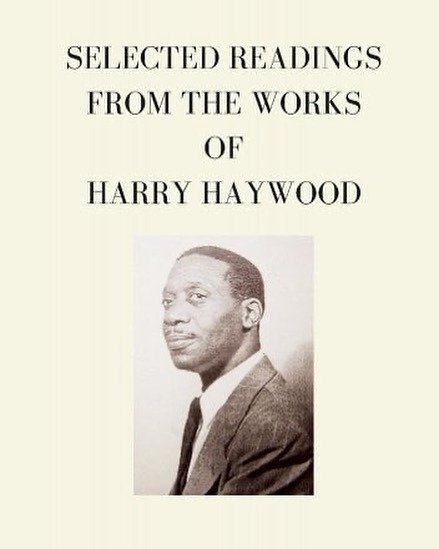
Harry Haywood was born Haywood Hall, Jr., on February 4, 1898, in South Omaha to former slaves Harriet and Haywood Hall, from MO and West TN, respectively. They had migrated to Omaha because of jobs with the railroads and meatpacking industry, as did numerous other southern African Americans. South Omaha attracted White immigrants, and ethnic Irish had established an early neighborhood there. He was the youngest of three sons. In 1913 after their father was attacked by whites, the Hall family moved to Minneapolis. Two years later in 1915, they moved to Chicago. During WWI, he served with the Eighth Regiment, an African American regiment. Upon his return to Chicago, he was radicalized by the bitter Red Summer of 1919, especially the Chicago race riot, in which mostly ethnic Irish attacked African Americans on the South Side. He was influenced by his older brother Otto, who joined the Communist Party in 1921 and invited him to enter the secret African Blood Brotherhood. He was influenced by theories he read in Vladimir Lenin's State and Revolution as a teen. He stated, in his autobiography Black Bolshevik, that "this work was the single most important book I had read in the entire three years of my political search and was decisive in leading me to the Communist Party." #africanhistory365 #africanexcellence https://www.instagram.com/p/CoPoD46riHr/?igshid=NGJjMDIxMWI=
17 notes
·
View notes
Text
The auditory version of the blank sheet is, of course, silence. Protesting wordlessly was a technique employed by Black Americans in July 1917, when an estimated 10,000 citizens, organized by religious groups and the NAACP, marched down Fifth Avenue in Manhattan to protest racial violence and discrimination. As the New York Times reported, “Those in the parade represented every negro organization and church in the city. They marched, however, not as organizations, but as a people of one race, united by ties of blood and color, and working for a common cause.”
In September 1968, tens of thousands of students staged a silent march calling for greater democracy in Mexico. Contradicting the Mexican government’s accusations that they were resorting to violence, the students protested by simply carrying flags. (Around this same time, civil rights activists in the United States wielded flags with similar goals in mind.) “You’re taking the symbols of the regime and exposing the illegitimacy of the regime at the same time,” says David Meyer, a sociologist at the University of California, Irvine.
Other protests have employed more obvious symbols of repression, including handcuffs, blindfolds and gags. The last of these became widespread as a political prop following the trial of the Chicago Seven (originally eight), antiwar protesters who were charged with inciting a riot at the 1968 Democratic National Convention in Chicago. During the 1969 trial, the judge ordered defendant Bobby Seale to be gagged and chained to his chair.
Decades before football player Colin Kaepernick created a stir by kneeling during the national anthem, Black athletes silently used their status to fight oppression. At the awards ceremony for the 200-meter dash at the 1968 Summer Olympics in Mexico City, medalists Tommie Smith and John Carlos each raised a clenched gloved fist in a call for global human rights.
The operating theory behind silent protests is that when the cause is clear and righteous, there’s no reason to yell about it—a principle demonstrated by more recent examples of silent protests, too. In 2009, a peaceful rally in Iran against unfair elections ended in gunfire and explosions. To vent their fury, hundreds of thousands of Iranians met at Tehran’s symbolic central roadway, Islamic Revolution Street, and marched quietly to Freedom Square, hoping to avoid a police crackdown. In 2011, protesters in Riyadh, Saudi Arabia, stood quietly in solidarity with activists detained without trial by the country’s regime. Multiple times in Hong Kong, lawyers have marched in silence to protest Beijing’s incursions into the city’s constitution and legal affairs.
— The History Behind China's White Paper Protests
#suzanne sataline#the history beyond china's white paper protests#history#totalitarianism#oppression#politics#protests#silent protests#silent parade#mexican movement of 1968#chicago seven#1968 olympics black power salute#2009 iranian presidential election protests#2011-2012 saudi arabia protests#2019-2020 hong kong protests#usa#african americans#mexico#iran#saudi arabia#hong kong
4 notes
·
View notes
Text
Hundreds of young people descended on the Millennium Park area for a "Teen Takeover" event on Saturday night. Videos posted on social media showed teenagers fighting in the streets, jumping on the roof of a bus, breaking into vehicles and setting them on fire.
Two boys—aged 16 and 17—who were standing in a crowd the 100 block of East Washington Street were wounded when shots were fired at around 9 p.m., Chicago police said. The 16-year was shot in the right arm, while the 17-year was shot in the left leg.
Both were taken to Northwestern Memorial Hospital in a fair condition, police said. No one is in custody in connection with that shooting, and an investigation is ongoing.
Fifteen people—nine adults and six juveniles—were arrested in connection with the "reckless and disruptive behavior" seen on Saturday night, a police spokesperson confirmed to Newsweek.
Chicago Mayor-Elect Brandon Johnson's response to the chaos that erupted in the downtown area over the weekend has sparked criticism from conservatives.
Most were charged with reckless conduct, the spokesperson said. A 16-year-old was charged with the unlawful use of a weapon, while another adult and juvenile were charged with possession of a stolen vehicle.
Johnson, a progressive Democrat who won Chicago's mayoral race earlier this month, issued a statement on Sunday responding to the unrest.
"In no way do I condone the destructive activity we saw in the Loop and lakefront this weekend. It is unacceptable and has no place in our city. However, it is not constructive to demonize youth who have otherwise been starved of opportunities in their own communities."
Johnson added: "Our city must work together to create spaces for youth to gather safely and responsibly, under adult guidance and supervision, to ensure that every part of our city remains welcome for both residents and visitors."
He said that is one aspect of his "comprehensive approach to improve public safety and make Chicago livable for everyone." Newsweek has contacted Johnson's team for further comment via email.
Some conservatives and Twitter users condemned Johnson's response.
"Incredible statement to those who saw the videos of violence and destruction. "Don't demonize youth," for a little pop-up riot. It's actually YOUR fault they did this," wrote Mike Cernovich, a controversial conservative commentator.
"Chicago is so screwed," tweeted Collin Rugg, co-owner of the conservative commentary outlet Trending Politics.
Mark Mendlovitz wrote: "Brandon Johnson doesn't want to demonize the "youth" who vandalized Chicago last night. Bless his heart!"
"This is a disaster of an administration and this guy hasn't even started yet," tweeted Dave Van de Walle.
However, others defended Johnson's response.
"Imagine being a conservative with such a hard-on for a police state that you can't handle the nuance in this response," wrote Alex Jewell. "You CAN condemn events while being cognizant of root socioeconomic causes and conditions, because you care about solutions."
Raymond Chang, a pastor and president of the Asian American Christian Collaborative, wrote: "This is the right way to address things like this. You don't have to condone bad behavior, but you can also look beyond the behavior to the forces that shape that behavior and what could be done further up the river."
Mayor Lori Lightfoot also released a statement, noting that many of the young people who gathered were there to have a good time and enjoy the unseasonably warm weather, but some were involved in "reckless, disrespectful and unlawful" behavior.
"As I have said before, we as a city cannot and will not allow any of our public spaces to become a platform for criminal conduct," Lightfoot said. "Most importantly, parents and guardians must know where their children are and be responsible for their actions. Instilling the important values of respect for people and property must begin at home."
Lightfoot said her office has communicated with senior leadership in the Chicago Police Department and they have assured her "that they will make the necessary adjustments to address these teen trends issues as we move into the summer months."
She added: "We have invested millions of dollars to support community-based organizations to partner with youth to co-activate fun, safe spaces all over the City throughout the year. We ask parents to partner with us by making sure that your children's plans are safe and that they know when to exit a situation before it becomes unsafe."
A Chicago police spokesperson told Newsweek: "The top priority of the Chicago Police Department is the safety and security of all residents and visitors at all times in all parts of the city."
#nunyas news#you can do both things here#this is not a either or situation#not until political parties get involved at least
4 notes
·
View notes
Photo
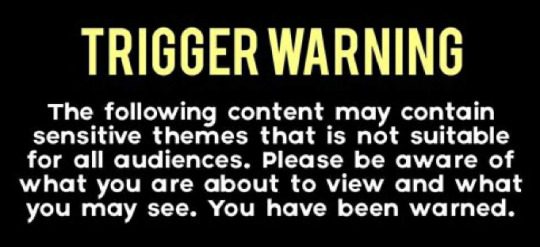
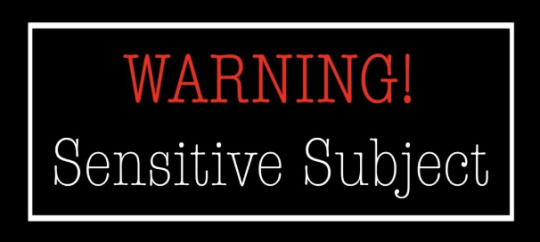
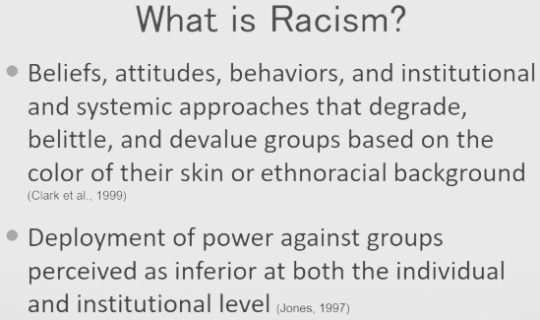

youtube
youtube

BLACK PARAPHERNALIA DISCLAIMER - PLEASE READ
A shout out to leptoquark3 where BP first saw/knew of Edward C, Lawson
“Why do we have to look closely? because they won’t just come out and say they hate Black people - story over - they have to use pseudoscientific beliefs to construct their racist arguments… “Racists are inherently intellectual cowards�� - Edward C. Lawson
WHO WAS THAT MAN ON OPRAH SHOW 1990
EDWARD C. LAWSON Born?- Died 2011?
An African American civil rights activist, who was the plaintiff in the case of Kolender v. Lawson, 461 U.S. 352 (1983), in which the United States Supreme Court ruled that a California statute authorizing a police officer to arrest a person for refusing to present identification was unconstitutionally vague.
Between March 1975 and January 1977, Lawson was detained approximately fifteen times, as a pedestrian or as a diner in a cafe, and asked to present identification; some detentions lasted minutes, others lasted hours.
He was arrested several times pursuant to California Penal Code § 647(e), but prosecuted only twice, with one conviction (the second charge was dismissed). In 1975, Lawson, representing himself (known as pro se), brought a civil rights action against San Diego Chief of Police William Kolender and others, taking the case through U.S. District Court and ultimately to the U.S. Supreme Court, which ruled in his favor.
The U.S. District Court ruled in Lawson's favor, enjoining enforcement of the law. Kolender appealed the ruling the United States Court of Appeals for the Ninth Circuit; the ruling in Lawson v. Kolender, 658 F.2d 1362 (9th Cir. 1981) upheld the District Court, voiding § 647(e).
Kolender appealed the ruling to the U.S. Supreme Court, which in 1983 upheld the Court of Appeals in voiding the law. This case is of historical importance not only because the California statute was voided, but also because it is one of the few examples of an ordinary citizen successfully representing himself all the way through a U.S. District Court.
Lawson received political support at the time from prominent Black leaders including Jesse Jackson, activist/comedian Dick Gregory, U.S. Congresswoman Maxine Waters D-Los Angeles, U.S. Congressman John Conyers D-Detroit.
Lawson's Supreme Court brief was accompanied by amici curiae briefs from the ACLU, the National Lawyers Guild, the NAACP Legal Defense and Educational Fund, and others.
In 1983, Carl Stern, the CBS Evening News U.S. Supreme Court reporter commented that this case was the most reported U.S. Supreme Court case that year. Stern was referring to front-page newspaper articles in The New York Times, The Washington Post, Chicago Tribune, The Miami Herald, Los Angeles Times as well as articles in Newsweek, Time, Fortune, The Village Voice and other news publications.
By way of his grandmother, Lundy Bohanan, Edward C. Lawson is a direct descendant of a survivor of the 1921 Tulsa Race Riot and massacre in Oklahoma. On May 12, 2011, Edward C. Lawson died; This is reported by John Longenecker of Pro Per Inc., a longtime business partner and friend. To date, there has been no obituary. A report from a man with a similar name as Edward's relates that he died of pancreatic cancer.
Excerpt-source of story:https://alchetron.com/Edward-C-Lawson
3 notes
·
View notes
Text
The Democratic Convention of 1968

The Democratic Convention of 1968 was held August 26-29 in Chicago, Illinois. As delegates flowed into the International Amphitheatre to nominate a Democratic Party presidential candidate, tens of thousands of protesters swarmed the streets to rally against the Vietnam War and the political status quo. By the time Vice President Herbert Humphrey received the presidential nomination, the strife within the Democratic Party was laid bare and the streets of Chicago had seen riots and bloodshed involving protesters, police and bystanders alike, radically changing America’s political and social landscape.
Though the 1968 protest at the Democratic National Convention were largely against the Vietnam War, the country was undergoing unrest on many fronts. The months leading up to the infamous 1968 Democratic Convention were turbulent: The brutal assassination of Martin Luther King, Jr. in April had left the country reeling, and although segregation had officially ended, racism and poverty continued to make life difficult for many blacks. The Vietnam War was in its 13th year and the recent Tet Offensive had proved the conflict was far from over, as the draft sent more young men into the fray. It was only a matter of time before a showdown would take place between the government of President Lyndon B. Johnson and America’s war-weary citizens. By the time delegates arrived for the convention in Chicago, protests had been set in motion by members of the Youth International Party (yippies) and the National Mobilization Committee to End the War in Vietnam (MOBE), whose organizers included Rennie Davis and Tom Hayden. But Chicago’s Mayor Richard Daley had no intention of letting his city or the convention be overrun by protestors. The stage was set for an explosive face-off. The Democratic Party in 1968 was in crisis. President Johnson—despite being elected with a huge majority in 1964—was soon loathed by many of his peers and constituents due to his pro-Vietnam War policies. In November 1967, a relatively unknown and unremarkable Minnesota senator named Eugene McCarthy announced his intent to challenge Johnson for the Democratic presidential nomination. In March 1968, McCarthy won 40 percent of the vote in the New Hampshire presidential primary, thereby validating his candidacy.
A few days later, Senator Robert F. Kennedy abandoned his support for Johnson and entered the presidential fight. President Johnson saw the writing on the wall and, on March 31, told a stunned nation during a televised address that he would not seek reelection. The following month, Vice President Hubert Humphrey—backed by Johnson—announced his candidacy for the nomination, further dividing the Democratic Party. Humphrey focused on winning delegates in non-primary states, while Kennedy and McCarthy campaigned hard in primary states. Tragically, the race was turned upside down again when Robert Kennedy was assassinated after giving his victory speech following the California primary on June 4. Kennedy’s delegates were divided between McCarthy and dark-horse candidate Senator George McGovern, leaving Humphrey with more than enough votes to clench the Democratic presidential nomination, but also leaving the Democratic party in turmoil just weeks before their national convention. Fed up with Democratic leadership’s penchant for war, yippies protesting at the 1968 Democratic National Convention conceived their own solution: nominate a pig for president. Jerry Rubin and Abbie Hoffman came up with the idea, named their candidate “Pegasus the Immortal” and pledged, “They nominate a president and he eats the people. We nominate a president and the people eat him.” Pegasus the Immortal’s presidential campaign may have been the shortest in recorded history. His chance to become leader of the free world ended abruptly when he, Rubin and other members of his campaign staff were arrested at his first press conference in front of the Chicago Convention Center. (Pegasus's eventual fate remains unknown to this day.)
In July 1968, MOBE and yippie activists applied for permits to camp at Lincoln Park and hold rallies at the International Amphitheatre, Soldier Field and Grant Park. Hoping to dilute the protestors’ momentum, Mayor Daley approved only one permit to protest at the bandshell at Grant Park. About a week before the convention, despite not having permission, thousands of protestors—many of them from out of state and from middle-class families—set up camp at Lincoln Park, about ten miles from the Amphitheatre. Expecting resistance, protest leaders organized self-defense training sessions including karate and snake dancing. In the meantime, Democratic Party delegates began arriving in a Chicago that was rapidly approaching a state of siege: National Guardsmen and policemen met their planes. Their hotels were under heavy guard and the convention Amphitheatre was a virtual fortress.
Initially, Mayor Daley let the protestors remain in Lincoln Park. The day before the convention began, however, he ordered Chicago police to enforce the city’s 11:00 p.m. park curfew hoping that a show of force would clear out the protestors before the convention began. The mood at Lincoln Park was festive at first. There were impromptu yoga sessions, music, dancing and the general revelry that happens when like-minded people gather together to protest the establishment. But the mood turned tense as opening day of the convention approached and the police presence increased. Around 11:00 p.m. on Sunday, August 25, a couple thousand police officers wearing riot gear, helmets and gas masks lined up at Lincoln Park. Some threw tear gas into the crowd. Protestors scattered every which way and rushed out of the park, blindly falling over each other as the tear gas assaulted their eyes. The protest grew violent when the police attacked them with clubs and often didn’t stop when someone was subdued on the ground. Eyewitnesses report it was a scene of unrestrained bloodshed and chaos. Later, the police defended their actions by claiming the protestors shouldn’t have broken curfew or resisted arrest. According to Thomas Foran, the Chicago lawyer who would later prosecute protest leaders, many of the protestors were “spoiled brats who thought that they knew better than everybody…they were being encouraged to do things they shouldn’t do by these sophisticated guys whose idea was to shame the U.S. government.”
On Monday, August 26, the 1968 Democratic National Convention officially opened at the International Amphitheatre. Television cameras captured everything happening on the convention floor but were unable to live broadcast the demonstrations happening outside. Whether the news blackout was due to the electrical workers’ strike (as Mayor Daley claimed) or a deliberate attempt to prevent the public from learning about the citywide protests is unclear. Several states including Texas, North Carolina, Georgia, Mississippi and Alabama had multiple slates of delegates competing to be seated at the convention. Many took the battle to the convention floor. A racially diverse delegation from Texas was defeated. The convention soon became a battleground between anti-war supporters and Vice President Humphrey’s—and indirectly, President Johnson’s—supporters. On Tuesday night, when a promised televised prime-time debate on Vietnam was postponed until after midnight when most viewers would be asleep, the anti-war delegates made their fury known to the point that Mayor Daley had the convention adjourned for the night.
By Tuesday evening, protestors had gathered at the Conrad Hilton Hotel where many of the delegates and candidates, including Humphrey and McCarthy, stayed. As tense police officers tried to maintain control, Mayor Daley sent in the National Guard to help. Protest leader Tom Hayden united the crowd by proclaiming, “Tomorrow is the day that this operation has been pointing for some time. We are going to gather here. We are going to make our way to the Amphitheatre by any means necessary.” On Wednesday, August 28, the promised televised Vietnam debate finally took place to determine if the Democrats would adopt a plank of peace or one of continued war. At the same time, MOBE convened their long-planned and highly anticipated anti-war rally at the bandshell at Grant Park. Up to fifteen thousand protestors gathered, much less than protest leaders had hoped for, and they were quickly surrounded by hundreds of police and National Guardsmen under orders to keep the protestors from reaching the Amphitheatre. Around 3:30 p.m. that afternoon, a teenage boy climbed a flagpole near the bandshell and lowered the American flag. The police moved in swiftly to arrest him as protestors rallied to his aid, assaulting the officers with rocks and food or whatever else they had on hand. Hoping to quell further violence, Davis reminded police that a legal protest permit had been obtained and requested that all police leave the park. In response, the officers moved in and beat Davis unconscious. The police beat protestors at will with clubs and fists. Despite the hostility, anti-violence protest leader David Dillinger still supported protesting peacefully. But all bets were off for Hayden, who feared mass arrests and worsening violence. He encouraged protestors to make for the streets in small groups and head back to the Hilton Hotel.
As things heated up in Grant Park, they also heated up on the convention floor. The peace plank was defeated, a huge blow to the peace delegates and millions of Americans who wanted the Vietnam War to end, and the delegates erupted into chaos. In the words of one delegate, “We were desolate. All of the work that we had done, all of the effort we had made had, it seemed to us, come to naught…our hearts were broken.” By nightfall, a standoff had ensued in front of the Hilton between thousands of angry protestors and thousands of police officers. No one knows who or what triggered the first blow, but soon police began clearing out the crowd, pummeling protestors (and innocent bystanders) with billy clubs and using so much tear gas that it reportedly reached Humphrey some 25 floors up as he watched the bedlam unfold from his hotel room window. At home in their living rooms, horrified Americans alternated between watching images of police brutally beating young, blood-splattered demonstrators and Humphrey’s nomination. During the nomination process, some delegates spoke to the violence. One pro-McGovern delegate went so far as to refer to the police violence as “Gestapo tactics in the streets of Chicago.” Late that evening, Humphrey won the presidential nomination with Senator Edmund Muskie of Maine as his running mate. But the win was nothing to celebrate. Any illusion of unity within the Democratic Party was shattered—after Humphrey’s nomination, many anti-war delegates joined protesters in solidarity and held a candlelight vigil. The next day, the remaining protesters and hundreds of anti-war delegates attempted to reach the Amphitheatre again but were deterred with tear gas. At midnight on August 29, the bloody and contentious 1968 Democratic Convention officially ended.
Over 650 protesters were arrested during the convention. The total number of injured protesters is unknown but over 100 were treated at area hospitals. It was reported that 192 police officers were injured and 49 required medical treatment. Davis, Dellinger, Hayden, Black Panther activist Bobby Seale and four other protest organizers, known as the Chicago Eight, were charged with conspiracy and crossing state lines to incite a riot and brought to trial. After Seale complained about being denied his right to choose his own lawyer, the judge ordered him to appear before the jury each day bound, gagged and chained to a chair. Seale was removed from the Chicago Eight case and ordered to stand trial separately, making the defendants into the Chicago Seven. Seale was sentenced to four years for contempt of court, but the charges were later overturned. After a lengthy, often circus-like trial, the jury found the Chicago Seven not guilty of conspiracy. Five defendants, however, were found guilty of inciting a riot. All convictions were eventually overturned on appeal. The pandemonium at the 1968 Democratic National Convention did little to stop the Vietnam War or win the 1968 presidential election. By the end of the year, Republican Richard M. Nixon was President-elect of the United States and 16,592 American soldiers had been killed in Vietnam, the most of any year since the war began.
The events of the convention forced the Democratic Party to take a hard look at how they did business and how they could regain the public’s trust.
2 notes
·
View notes